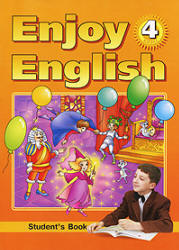The syllabic structure in English

- Рубрика: Презентации / Презентации по английскому языку
- Просмотров: 387
Презентация "The syllabic structure in English" онлайн бесплатно на сайте электронных школьных учебников edulib.ru
The syllable is a basic unit of speech studied on both the phonetic and phonological levels of analysis. No matter how easy it can be for people and even for children to count the number of syllables in a sequence in their native language, still there are no universally agreed upon phonetic definitions of what a syllable is.
Phonetically syllables “are usually described as consisting of a centre which has little or no obstruction to airflow and which sounds comparatively loud; before and after that centre (…) there will be greater obstruction to airflow and/or less loud sound”. In the monosyllable (one-syllable word) cat /kæt/, the vowel /æ/ is the “centre” at which little obstruction takes place, whereas we have complete obstruction to the airflow for the surrounding plosives /k/ and /t/.
In the commonly used graphic representation of the syllabic structure of words and wordforms every vowel sound is represented by the capital letter V and every non-syllabic consonant sound by the capital letter C.
There are several theories of the syllable formation and syllable division, and none of them is shared by all linguists: Expiratory Chest-pulse Pressure
The first is constitutive function. It lies in its ability to be a part of a word itself. The syllables form language units of greater magnitude that is words, morphemes, and utterances. It this respect two things should be emphasized. First, the syllable is the unit within which the relations between distinctive features of phonemes and their acoustic correlates are revealed. Second, within a syllable (or syllables) prosodic characteristics of speech are realized, which form the stress pattern of a word and the intonation structure of an utterance. In sum, the syllable is a specific minimal structure of both segmental and suprasegmental features.
The other function is distinctive one. In this respect the syllable is characterized by its ability to differentiate words and word-forms. One minimal pare has been found in English to illustrate the word distinctive function in the syllabic: nitrate — night-rate.
There analogical distinction between word combinations can be illustrated by many more examples: an aim - a name; an ice house - a nice house, etc. Sometimes the difference in syllable division may be the basic ground for differentiation in such pairs as I saw her rise.- I saw her eyes; I saw the meat — I saw them eat.







![Phonemic syllables : [‘mei-kә] [‘ei-ljәn] Phonemic syllables : [‘mei-kә] [‘ei-ljәn]](https://Xp4sTM90BVzr.frontroute.org/s11/2/8/0/7/2/8.jpg)












